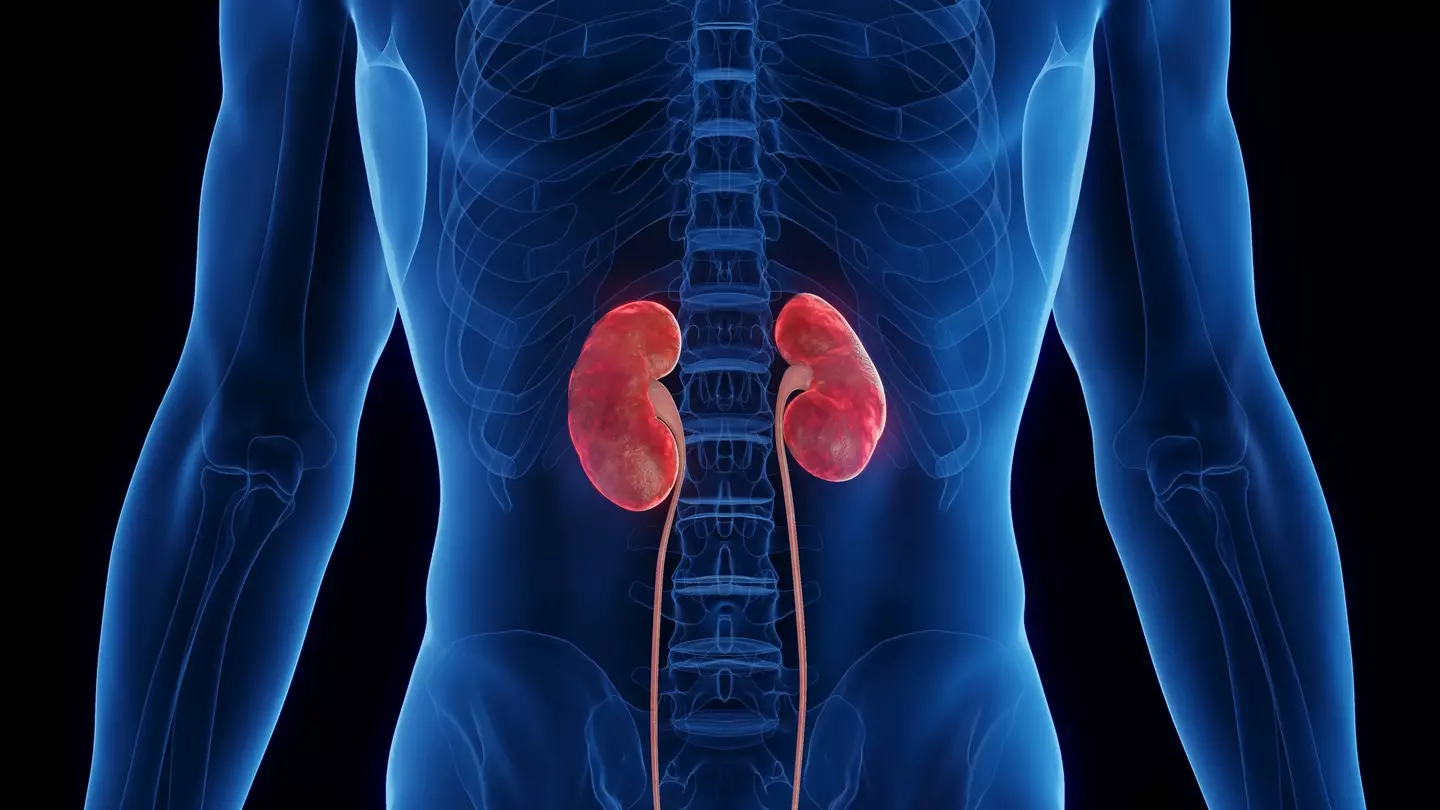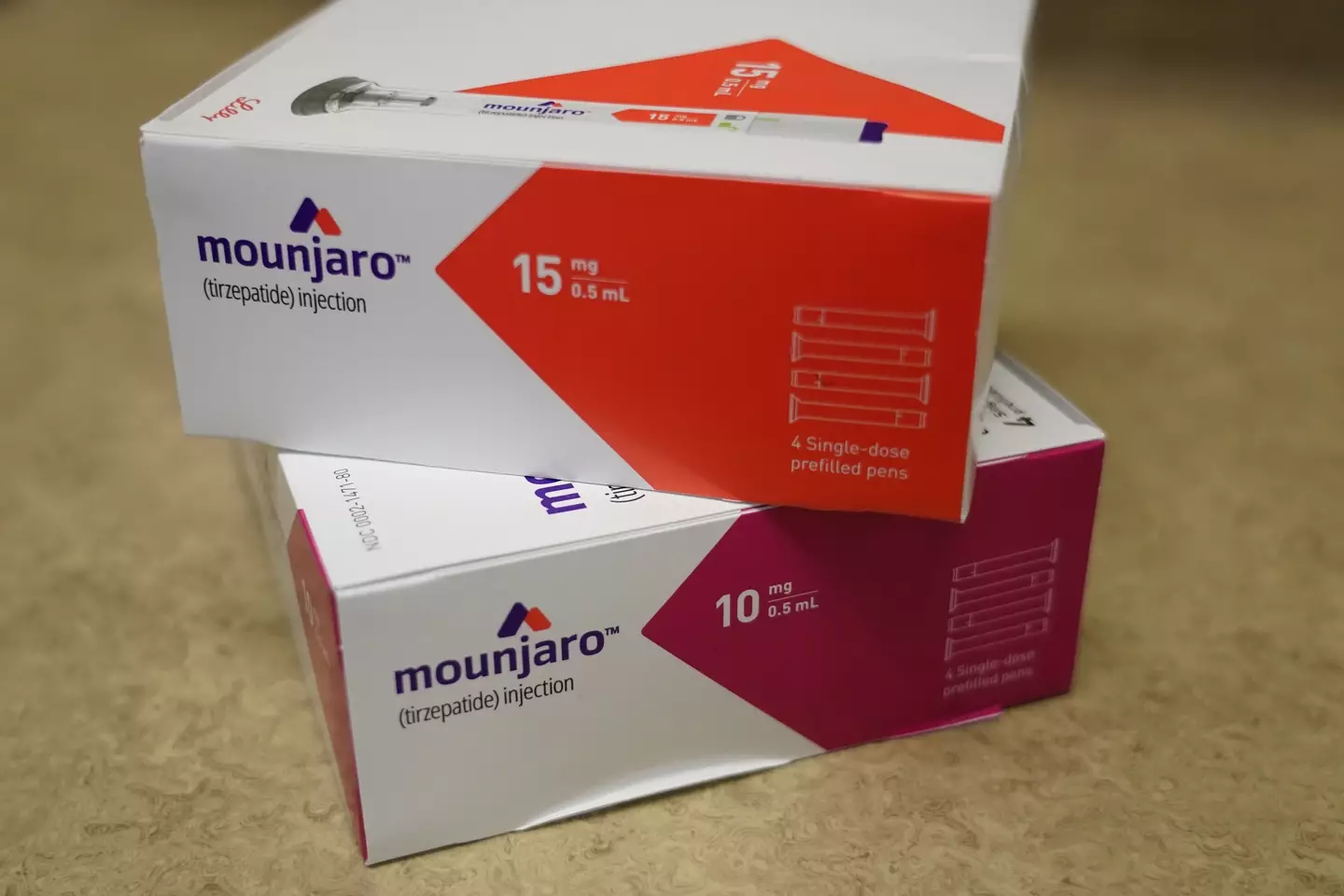You might want to get up and walk around to read this
A new study has found that sitting down too much might have a detrimental impact on your brain in the long run.
Yep, that’s right; sounds like you can’t even enjoy a good long sit anymore…
Researchers from Vanderbilt University’s Memory and Alzheimer’s Center have been looking into the impact of a ‘sedentary’ lifestyle on the brain.
The scientists tracked 404 adults age 50 and older for seven years, tracked how much they sat and laid down, and compared it to how much their brain shrunk.
This brain shrinkage is linked with worse cognition and brain shrinkage in areas related to risk for developing Alzheimer’s disease.
While some have believed that simply exercising regularly is enough to counteract this completely, the research doesn’t support this.

Going to have a whole lot less of this (Getty Stock Image)
The study showed that even those who exercised for 150 minutes a week still experienced brain shrinkage if they sat for long hours.
Participants who spent more time sedentary were more likely to experience cognitive decline and neurodegenerative changes regardless of how much they exercised, they concluded.
Marissa Gogniat, PhD, assistant professor of Neurology at Pitt and former postdoctoral fellow at the Vanderbilt Memory and Alzheimer’s Center led the study and commented on the university’s findings.
She said: “Reducing your risk for Alzheimer’s disease is not just about working out once a day.
“Minimizing the time spent sitting, even if you do exercise daily, reduces the likelihood of developing Alzheimer’s disease.”
The study’s co-author Angela Jefferson, PhD and professor of Neurology and founding director of the Vanderbilt Memory and Alzheimer’s Center at VUMC, echoed a similar statement about the importance of being active as we get older.

Might need to keep this to a minimum aswell (Getty stock Image)
She highlighted that participants who carried theAPOE-e4allele, a genetic risk factor for Alzheimer’s disease, may need to do even more to have an active lifestyle due to the increased risk of Alzheimers.
Jefferson said: “It is critical to study lifestyle choices and the impact they have on brain health as we age.
“Our study showed that reducing sitting time could be a promising strategy for preventing neurodegeneration and subsequent cognitive decline.
“This research highlights the importance of reducing sitting time, particularly among aging adults at increased genetic risk for Alzheimer’s disease. It is critical to our brain health to take breaks from sitting throughout the day and move around to increase our active time.”
So, if you read through this while sat down, I suppose you should go for a walk or something.Featured Image Credit: Getty Stock Images
Advert

Published 17:00 9 May 2025 GMT+1
Symptoms of kidney disease explained as scientists discover surprising way to detect the illness
Some 53 million Americans are diagnosed with the condition
Scientists have discovered a new way to diagnose a common kidney condition which affects some 35 million Americans.
Known as Chronic Kidney Disease (CKD), it occurs over time when the organs don’t function as well as they should, meaning they can’t filter waste and extra fluid from the blood effectively.
If left untreated, it can cause kidney failure, which can be fatal.
The CDC writes that the health condition impacts some 35 million Americans but, worryingly, many more could have the disease without even realizing it.
Currently, it’s diagnosed by urine and blood tests – but that could all be about to change.

Chronic Kidney Disease is currently diagnosed via blood and urine tests (Sebastian Kaulitzki/Science Photo Library/Getty Images)
Scientists have adapted face masks – similar to the ones people worn during the Coronavirus pandemic – into diagnostic tools that could help identify CKD.
A study published in ACS Sensors describes a new type of mask that includes a breath sensor designed to detect specific molecules linked to the disease.
People with CKD exhale higher levels of certain chemicals – including ammonia, ethanol, propanol and acetone – meaning these levels can be detected by breath alone.
Researchers embedded a chemical sensor inside a standard surgical face mask and testing it on 100 participants.
Around half had a previous diagnosis of CKD and the other half did not have it.

A special mask hooked up to a machine could help detect kidney disease (EMS-Forster-Productions/Getty Images)
The smart mask was able to distinguish between the two groups with high accuracy: 84 percent true positives and 88 percent true negatives.
The sensor’s data also showed promise for determining the stage of CKD. There are five stages, with the most severe being kidney failure.
Coauthors of the study, Sergio Bernardini and Annalisa Noce, said: “The implementation of this technology is expected to enhance the management of CKD patients by facilitating the timely identification of changes in disease progression.”
What are the symptoms of kidney disease?
According to the Cleveland Clinic, the early stages of Chronic Kidney Disease don’t always give us warning signs. But as the condition worsens, you may begin to notice some symptoms.
These can affect your toilet habits, including the need to pee more often and foamy or bubbly urine.

CKD could manifest as needing to pee more often and changes in your urine (Peter Dazeley/Getty Images)
It can also cause a loss of appetite, trouble sleeping and tiredness or weakness.
You may notice swelling of your hands, feet and ankles as well as muscle cramps.
It can affect our face and skin too, causing puffy eyes and dry, itchy skin and the darkening of your skin.
Other symptoms include nausea, vomiting, high blood pressure and shortness of breath.
If you have any concerns, contact your doctor as soon as possible.Featured Image Credit: Tara Moore/Getty Images
Topics: Health

Published 19:51 12 May 2025 GMT+1
First ever study of obesity drugs reveals the best jab for weight loss
Weight loss drugs and jabs have become more popular in recent years
Using weight loss jabs or drugs to shed the pounds has become more popular in recent years and a new study recently pitted two drugs against one another to see which was more effective.
When it comes to weight loss jabs, many people’s minds go straight to Ozempic, and thats for good reason.
Despite the drug actually being introduced as a drug for people with Type-2 diabetes to help them manage their blood sugar levels, it has become popular for simply losing weight amongst celebrities.
This is despite the often forgotten negative side effects that can arise when misusing the drug.
But for those not wishing to jump on the Ozempic hype, they may have been turning their attentions to other drugs on the market used specifically for weight loss.

Weight loss jabs have become popular in recent years (Getty Stock Image)
The trial saw researchers look at the effectiveness of weight loss for drug Mounjaro and its rival Wegovy.
Reportedly, both drugs have proven to be effective at helping weight loss by tricking the brain into thinking you are full, ultimately meaning you eat less and burn fat stored in the body.
According to a report by the BBC, the trial was paid for by Eli Lilly, the manufacturer of Mounjaro and involved 750 obese people with an average weight of 113kg (249.12 pounds).
They were then asked to take the highest dose they could tolerate of one of the two drugs.
What did the results of the study reveal?
While both worked at achieving weight loss, Mounjaro proved to be the more effective.
The findings, that were presented at the European Congress on Obesity in Malaga and in the New England Journal of Medicine, showed:
- 32% of people lost a quarter of their body weight on Mounjaro compared to 16% on Wegovy
- Those on Mounjaro lost an average of 18cm from their waistlines compared with 13cm on Wegovy.
- Those on Mounjaro had better blood pressure, blood sugar and cholesterol levels.
- Both had similar levels of side-effects.
- Women tended to lose more weight than men.
Dr Louis Aronne conducted the trial and commented about the findings.
He said: “The majority of people with obesity will do just fine with semaglutide (Wegovy), those at the higher end may ultimately do better with tirzepatide (Mounjaro).”

The trial found Mounjaro was the more effective for weight loss (George Frey/Bloomberg via Getty Images)
Professor Naveed Sattar from the University of Glasgow said both drugs were good options for patients, but cautioned that this trial will likely see more people opt for Mounjaro in their quest to ‘lose as much weight as possible’.
He said: “Many will be satisfied with 15% weight loss… many want as much weight loss as possible.
“In the UK, tirzepatide sales privately are now well ahead of semaglutide – that’s just a reality – and this paper will accelerate that I imagine.”
He concluded that while it is good to have these options, it may be better to take the approach of making society healthier in the first place, to stop people developing obesity.Featured Image Credit: Getty Images/Iuliia Burmistrova
Topics: News, Science, World News, Food and Drink, Health

Updated 16:02 19 Mar 2025 GMTPublished 16:04 19 Mar 2025 GMT
New study reveals exactly how cannabis can impact your brain
A new study has found the negative impact cannabis can have on person’s brain
A recent study has revealed just how cannabis can negatively impact a person and what the drug is causing to happen in the brain.
While marijuana use has always been a contentious topic in the US, it has become more socially acceptable as many states have made recreational use of the drug legal – 24, to be precise.
While some consider it a rather harmless drug – especially as 39 US states have legalized medicinal use of cannabis – some of its possible negative impacts are less spoken about.
A recent study, published in November last year, highlighted how cannabis can impact the brain and ultimately ‘reduce brain connectivity’.
McGill University researchers found that young adults at risk of psychosis show reduced brain connectivity, and that this is made worse by cannabis use.

A new study has revealed the negative impact weed can have on the brain(Getty Stock Image)
The researchers found that there was a marked decrease in synaptic density – the connections between neurons that enable brain communication – in individuals at risk of psychosis, compared to a healthy control group.
To come to this conclusion they did a study that was first of its kind that used advanced brain scanning technology to study 49 participants aged 16 to 30, including individuals with recent psychotic symptoms and those considered at high risk.
The study, that was published in JAMA Psychiatry said that lower synaptic density is linked to social withdrawal and lack of motivation, symptoms the researchers say are difficult to treat.
Senior author of the study and professor in McGill’s Department of Psychiatry, Dr. Romina Mizrahi, said: “Not every cannabis user will develop psychosis, but for some, the risks are high. Our research helps clarify why.
“Cannabis appears to disrupt the brain’s natural process of refining and pruning synapses, which is essential for healthy brain development.”

According to researchers cannabis appears to disrupts the brain’s natural process of refining and pruning synapses(Getty Stock Image)
First author Belen Blasco, a PhD student at McGill’s Integrated Program in Neuroscience, explained why this study was ultimately beneficial for the scientific community and how it could help treatments in the future.
Regarding treating psychosis, he said: “Current medications largely target hallucinations, but they don’t address symptoms that make it difficult to manage social relationships, work, or school. By focusing on synaptic density, we may eventually develop therapies that enhance social function and quality of life for those affected.”
While cannabis is a known risk factor for developing psychosis, which can progress to schizophrenia, this is the first time researchers have measured structural changes in the brains of a high-risk population in real time, according to a press release about the study.
The press release also said for next steps the research team will explore whether these observed brain changes could predict psychosis development, potentially enabling earlier intervention.
If you want friendly, confidential advice about drugs, you can call American Addiction Centers on (313) 209-9137 24/7, or contact them through their website.Featured Image Credit: Getty Stock image

Published 17:31 17 May 2025 GMT+1
Experts issue urgent warning against popular new tanning ‘drug’ that could cause brain swelling and cancer
The viral trend promises to give users a natural glowing tan
Experts are issuing a dire warning about a possible ‘toxic’ tanning drug as it could cause some serious health complications.
Melanotan II, nicknamed the ‘Barbie drug‘, has grown in popularity on social media and by beauty gurus as the nasal spray vows to give users a perfect, natural tan.
Fans of the pink-packaged spray claim a dose, taken in a spray up the nose, gives them a bronze glow from the inside out.
However, medical experts are warning there is little natural about the untested synthetic drug, which is a version of the peptide α-melanocyte-stimulating hormone, reports the New York Post.
As the hormone is responsible for melanin production, the drug has also been linked to a list of some worrying side effects, from nausea and brain swelling to cancer.
It can also alter the size and pigmentation of moles, spark new moles and cause facial flushing, as well as abdominal cramps, vomiting and chest pain.

The spray could be dangerous (Getty Images)
Melanotan II has also been linked to rhabdomyolysis, more commonly referred to as ‘rhabdo,’ where muscle tissue breaks down and releases a toxin into the bloodstream which can provoke kidney failure.
When taken by men, they risk priapism, a prolongued and painful erection of their penis that is not caused by sexual activity which, if left untreated, can cause permanent damage.
Dr Jennifer Levine, a board-certified facial plastic surgeon, told the news outlet: “People always want to be tan, especially during the summer.”
“The Barbie movie has also added to the ‘beach’ trend.”
Yet Melanotan II has not been approved by the FDA, prompting concerns that it falls below regulatory standards.
There could be a variability in its dosages, as well as unidentified or undeclared ingredients, plus possible microbial contamination.
Unaware of its apparent dangers, Eidth Eagle told the BBC she had purchased and used nasal tanners before jetting off on a trip to the Canary Islands.
Yet on her second day of vacation, she was raced to hospital with an allergic reaction.

Skin cancer kills thousands of Americans every year (Getty Images)
Eagle said she felt like she was ‘suffocating inside’ and ‘drowning’ in her own body and is now urging others and governments around the world to adopt a ‘zero tolerance approach’.
If that’s not enough to put you off, consider that the UK, Australia and the US among several other countries have issued warnings to users.
TikTok even took a stand, banning hashtags that refer to it such as #tanningnasalspray, #melanotan and #melanotan2.
Yet such warnings have clearly fallen on deaf ears, as black market supplies continue to distribute the drug in various forms, from injectables to tablets, cream and the nose spray.
The fresh warning comes after a study published last year found social media has been the driving force behind unlicensed sales of the drug, and despite some platforms banning it, fans have been getting around it by posting it under different names or hashtags.
The American Cancer Society further warns 8,000 people in the US die of melanoma every year – so people should be aware of the risks before they hit the beach.Featured Image Credit: Getty Stock Image
Topics: Social Media, US News, Health, Cancer


